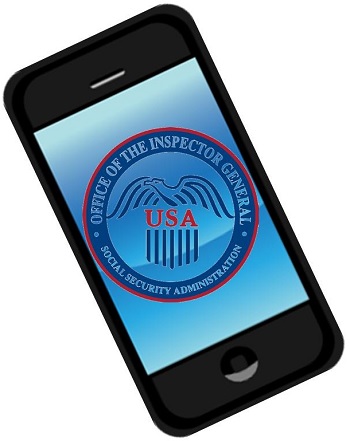Retailers may need to optimize their mobile sites if they want to engage consumers effectively
NetElixir has released a new report concerning mobile shoppers and their proclivity to purchase products online. Mobile commerce has become a powerful force in the retail industry, but not all retailers are taking steps to ensure that they are engaging consumers effectively. Many retailers have poorly optimized websites, which make it difficult for mobile shoppers to actually spend any money while they are shopping. If retailers cannot take mobile consumers seriously, they could be missing out on a major opportunity.
Smartphone conversion on optimized sites is 160% higher than on non-optimized sites
According to the report from NetElixir, conversion rates for smartphone users on sites that are optimized for mobile devices is 160% higher than conversion rates for shoppers on non-optimized sites. Websites that are optimized for mobile devices are easier for consumers to navigate when they are shopping on a smartphone or tablet. It is also easier for consumers to finalize a payment through such websites, whereas consumers often abandon their purchases on non-optimized sites due to frustration.
Smartphone users are also willing to spend more money on optimized sites
 The report also shows that consumers are more willing to spend money on optimized sites. Mobile shoppers spent an average of 70% more money on a mobile optimized site than on non-optimized sites. Smartphone users are also spending more money than those shopping from a PC or laptop, according to the report. Impulse purchases may be part of the reason behind this, as mobile shoppers are more inclined to make a seemingly spontaneous purchase than those shopping on a PC or laptop.
The report also shows that consumers are more willing to spend money on optimized sites. Mobile shoppers spent an average of 70% more money on a mobile optimized site than on non-optimized sites. Smartphone users are also spending more money than those shopping from a PC or laptop, according to the report. Impulse purchases may be part of the reason behind this, as mobile shoppers are more inclined to make a seemingly spontaneous purchase than those shopping on a PC or laptop.
Retailers could miss out on holiday season opportunity if they do not optimize their websites
If retailers choose not to optimize their sites for mobile consumers by the holiday season, they could miss out on a significant revenue opportunity. Over the past few years, mobile commerce has flourished during the holiday season. Retailers that were able to effectively engage mobile consumers found a great deal of success, while those that ignored mobile consumers did not.
Many believe that there continues to be exposure to considerable weaknesses with this technology.
The results of a review that was conducted on the mobile security levels through the use of smartphones and tablets by employees of the Social Security Administration (SSA) has revealed that there are considerable weaknesses.
It has been stated that a significant reason that this problem exists is due to the lack of a cohesive policy.
This problem and speculation regarding mobile security at the SSA was identified and published in a report by the Office of the Inspector General. What the Inspector General’s office determined was that the federal agency “did not always conform with federal standards and business best practices to mitigate unauthorized access to the agency’s sensitive information.” It determined that as the use of devices such as tablets and smartphones continues to become more prevalent, this represents a vital weakness.
A serious mobile security gap can exist when many common behaviors are adopted by SSA employees.
 While it is true that the use of mobile devices give SSA workers the opportunity to accomplish a great deal more, even when they are not sitting at their desks, there are certain behaviors that are considered to be quite commonplace among private device users that can leave a gaping hole in security when used on a professional level. Among them are the downloading of third party apps, as well as accessing the internet over an unsecure network. This spikes the risk of loss or theft of sensitive data.
While it is true that the use of mobile devices give SSA workers the opportunity to accomplish a great deal more, even when they are not sitting at their desks, there are certain behaviors that are considered to be quite commonplace among private device users that can leave a gaping hole in security when used on a professional level. Among them are the downloading of third party apps, as well as accessing the internet over an unsecure network. This spikes the risk of loss or theft of sensitive data.
Among the tests that were conducted on the security of the mobile device use by SSA employees was the copying of a file by the Inspector General’s office to a mobile device. Though the agency’s own standards would have required that this file encrypt itself automatically, this was not the case during the test.
Equally, among the 17 employees of the SSA that were interviewed in this review process, only half showed that they understood that for mobile security purposes, it was important that their agency-provided devices be used exclusively for official government business. Moreover, not a single one of the people who were interviewed were able to identify a policy that was specifically meant to guide them with regards to the use of these gadgets.
 The report also shows that consumers are more willing to spend money on optimized sites. Mobile shoppers spent an average of 70% more money on a mobile optimized site than on non-optimized sites. Smartphone users are also spending more money than those shopping from a PC or laptop, according to the report. Impulse purchases may be part of the reason behind this, as mobile shoppers are more inclined to make a seemingly spontaneous purchase than those shopping on a PC or laptop.
The report also shows that consumers are more willing to spend money on optimized sites. Mobile shoppers spent an average of 70% more money on a mobile optimized site than on non-optimized sites. Smartphone users are also spending more money than those shopping from a PC or laptop, according to the report. Impulse purchases may be part of the reason behind this, as mobile shoppers are more inclined to make a seemingly spontaneous purchase than those shopping on a PC or laptop.
 While it is true that the use of mobile devices give SSA workers the opportunity to accomplish a great deal more, even when they are not sitting at their desks, there are certain behaviors that are considered to be quite commonplace among private device users that can leave a gaping hole in security when used on a professional level. Among them are the downloading of third party
While it is true that the use of mobile devices give SSA workers the opportunity to accomplish a great deal more, even when they are not sitting at their desks, there are certain behaviors that are considered to be quite commonplace among private device users that can leave a gaping hole in security when used on a professional level. Among them are the downloading of third party 